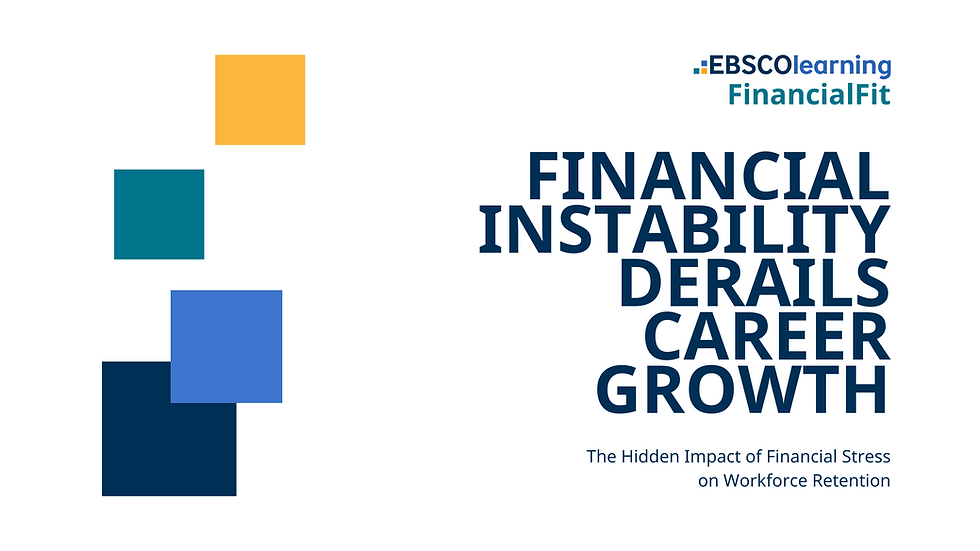Financial Wellness for Career Success: The Missing Link in Workforce Development
- EBSCOlearning Product
- Feb 26
- 2 min read
Why Financial Wellness Matters in Workforce Development
Workforce development programs are designed to equip job seekers with the skills and resources they need to secure stable employment and thrive in today’s job market. Yet, despite investments in upskilling, career coaching, and job placement services, one critical factor is often overlooked: financial wellness.
The reality is that financial insecurity can be a major barrier to career success. Without a solid financial foundation, workers struggle with transportation, housing stability, access to childcare, and even the ability to focus on job training. For workforce development professionals, integrating financial wellness education into training programs is essential to help job seekers not only find employment but sustain long-term career growth.

The Hidden Impact of Financial Stress on Workforce Retention
Financial instability doesn’t just affect job seekers—it directly impacts employers and local economies. Consider these statistics:
63% of American workers live paycheck to paycheck, making it difficult to cover unexpected expenses.
Financial stress costs U.S. businesses $4.7 billion per week in lost productivity.
Employees with financial worries are twice as likely to seek a new job, increasing turnover rates.
When workforce development programs fail to address financial literacy, workers enter jobs unprepared to manage their income effectively, leading to high turnover rates, missed workdays, and job dissatisfaction.
FinancialFit: Equipping Workers with the Tools for Financial Success
To create a truly holistic workforce development strategy, financial wellness must be part of the equation. That’s where FinancialFit from EBSCOlearning comes in.
FinancialFit is a mobile-first financial wellness platform designed to empower individuals with the knowledge and tools they need to build financial stability and long-term career success. The platform covers:
Budgeting & Saving – Helping workers make informed decisions about their income.
Credit & Debt Management – Equipping job seekers with the tools to improve financial health.
Smart Financial Planning – Ensuring long-term stability through accessible financial education.
By integrating FinancialFit into job training programs, workforce development initiatives, and economic mobility strategies, job seekers gain not just employment—but financial confidence.
Strengthening Workforce Development with Financial Wellness
For workforce development leaders, the question isn’t if financial wellness should be part of your strategy—it’s how soon can you implement it?
Want to learn more?
By prioritizing financial wellness, we can reduce turnover, increase job retention, and build a stronger, more economically resilient workforce. Let’s make financial literacy the missing link that completes the workforce development puzzle.


Comments